FULL STEAM AHEAD
As the post-pandemic filmmaking world started to stir in autumn 2020, Bullet Train roared to life, bringing Japan’s iconic Shinkansen to the big screen with rip-roaring flair. Stephen James, VFX supervisor at DNEG, reveals how some of the film’s eye-popping visuals were created.
A motley crew of rival assassins – including Brad Pitt as self-confessed “chump” Ladybug – find themselves on the world’s fastest train in director David Leitch’s newest action flick, lensed by Jonathan Sela. Naturally, high jinks ensue, aided by some of the most spectacular VFX work you’ll see on screen this year.
A team from visual effects studio DNEG, led by VFX supervisor Stephen James, VFX executive producer David Fox, and VFX producer Saado Abou-Khazaal, lent their technical expertise to Bullet Train. They delivered over 1,015 shots for the production, which was filmed using virtual production technology in a partnership between DNEG and Dimension Studio.
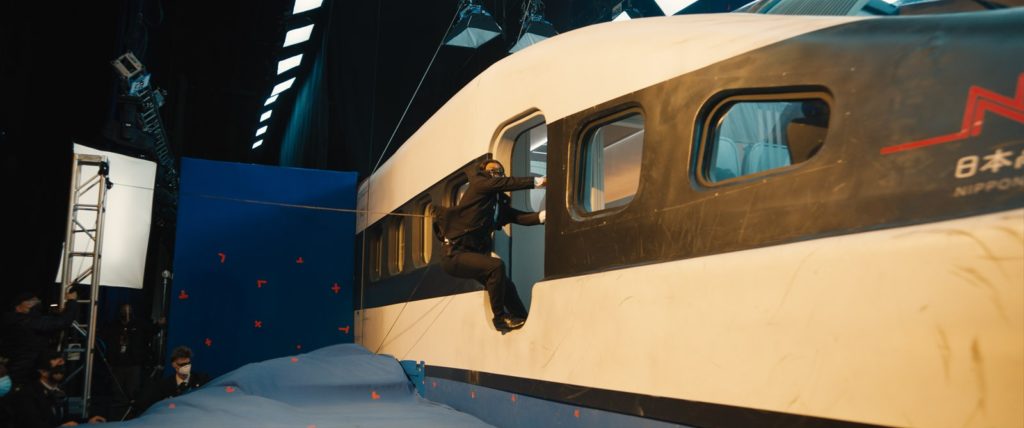

Director David Leitch has made a name for himself in the action genre, but he began his film career as a stuntman – even doubling for Brad Pitt. DNEG’s Stephen James had worked with Leitch and VFX supervisor Mike Brazelton on Deadpool 2 and Hobbs & Shaw – a fruitful collaboration that eventually saw Brazelton head client-side to work on set, while James stepped into the VFX supervisor role at DNEG.
“A lot of our initial conversations about Bullet Train were about the style – really leaning into the big colours and bold choices when it came to the environments and the aesthetic of the film,” says James, who is based at DNEG’s Vancouver office. “We knew already that David likes to go big with the action, particularly when it comes to visual effects. He comes from a stunt background so he can do so much on set. They go big on set with the more intimate fights, so we needed to have the visual effects portion – where we’re doing all the violence and really crazy stuff – as an extension of that.”
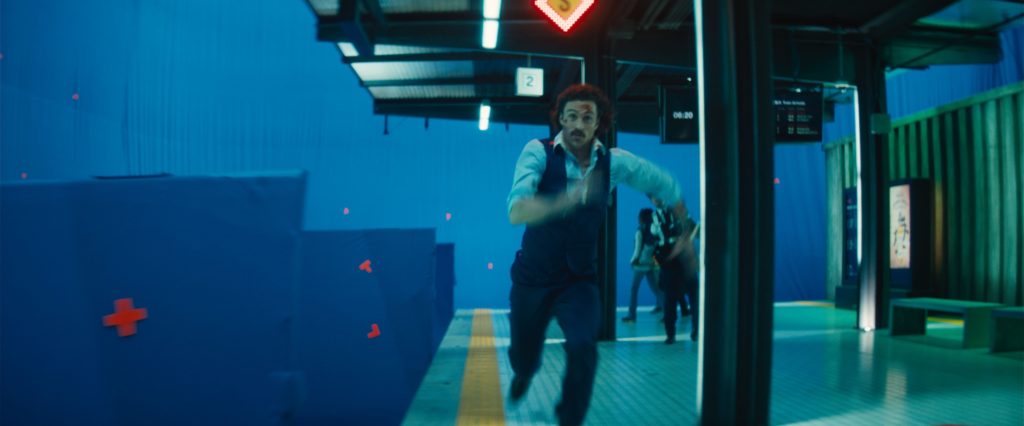
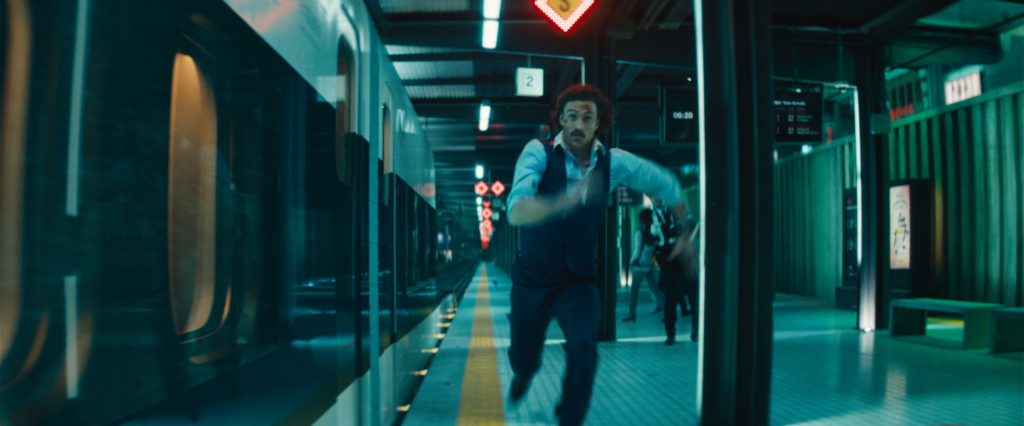
Production began in October 2020, just as the film industry was re-emerging from the heat of the pandemic. “We did quite a lot of the pre-production for the LED content work on set,” he says, “so anything that was outside of the windows before sunrise was all either filmed content in Japan, or CG content that we created. We worked on that for a good few months before production began.”
Hollywood may have been stirring, but Japan was in the throes of lockdown and international travel was off the agenda. Leitch had been keen to film a lot more on location, and DNEG would normally have their shoot team there capturing plenty of data to recreate the Japanese landscapes in detail for the backplates.
Forced to innovate, the team enlisted the help of Japan-based JAID Productions for reference photography. DNEG’s shoot supervisor in Vancouver, Dan Kunz, trained the JAID team remotely over the weeks prior to shooting before they captured settings ranging from the streets of Akihabara at night to the rice fields of Maibara at sunrise.

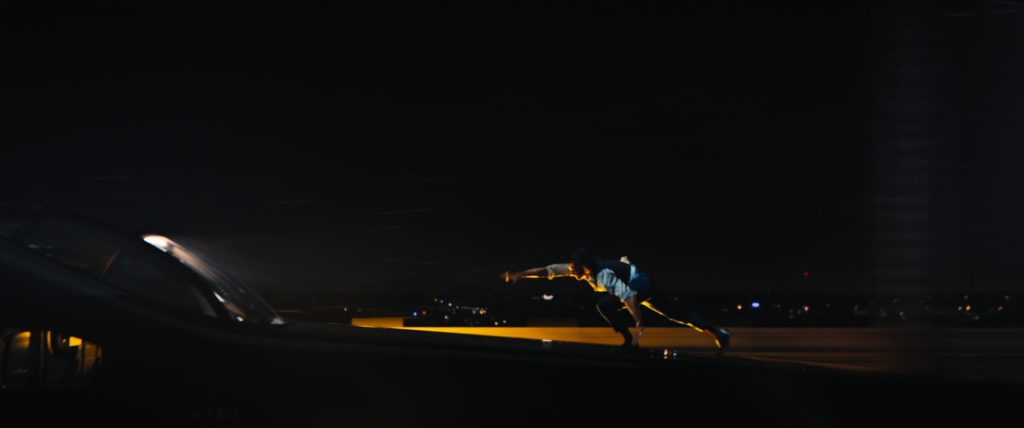
“When it came to the actual days when we needed to shoot, Dan and I would stay up quite late at night or early in the morning, because there were a lot of sunrises,” recalls James. “They would send us photos or video calls and it was a lot of, ‘Go to that spot over there, that’s great!’ They would also be uploading stuff and Dan would be checking it. It ended up being one of the nice things that came out of a difficult situation, being able to work with those local teams.”
The DNEG team created over 25km of unique CG environments that the bullet train would speed through at 300km/h. OpenStreetMap data proved useful in generating these vast landscapes, as DNEG’s environment supervisors Jeremy Touzery and Romain Simonnet found. The data gave the team a base they could then manually dress, streamlining the environment creation process.
“You can think of it like a blueprint of the world,” explains James. “We could find the way that the city streets were blocked out; the height of the buildings; the scale; where trees might be; where lakes might be. We can take this data and create some geometry out of it.
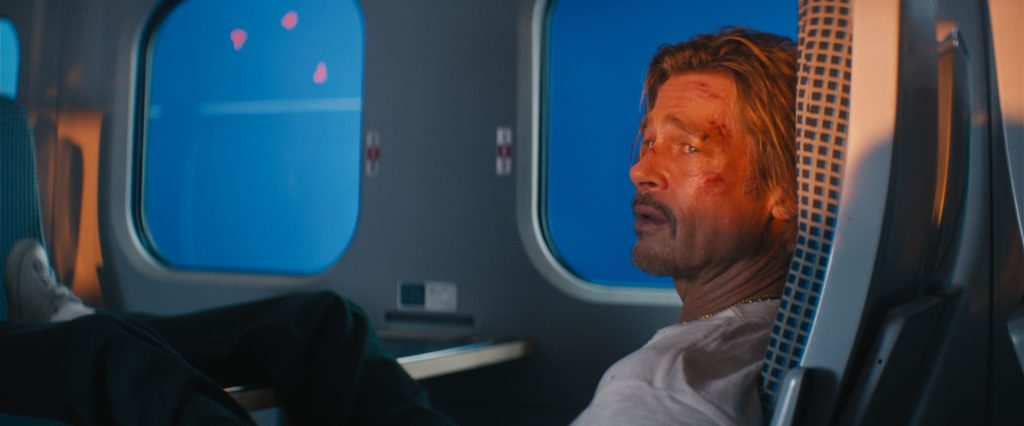
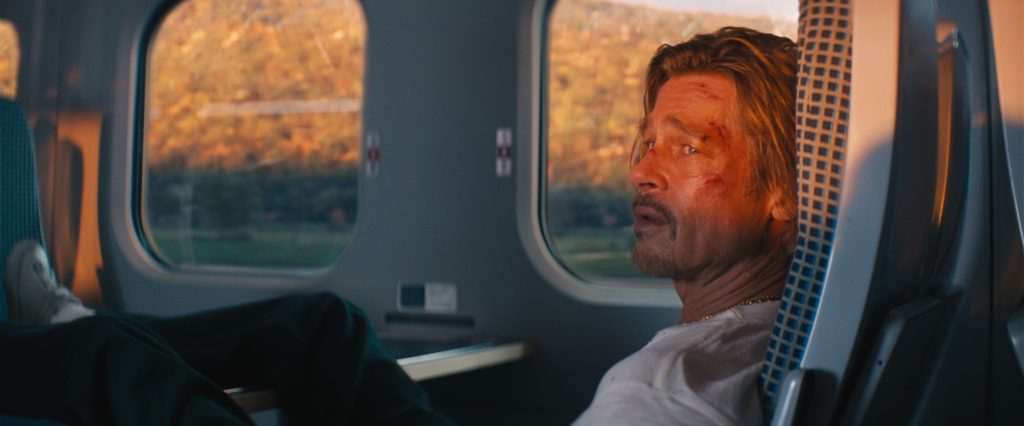
“It gave us a really good, quick foundation that we could lay out, and then from there we could do the manual dressing that adds a little bit more style and detail to the world. I think we had five or six total environments that were about five or six kilometres long, and then we would run down those again and again to constantly have these changing.”
Another fascinating part of DNEG’s work was designing a variety of distinct train station backgrounds.
“The production designer [David Scheunemann] put out lots of concept designs for these station environments,” says James. “We knew we wanted every station environment to feel unique in some way, so either dense urban environments or beautiful, peaceful rice fields at sunrise. So, at each station there was either a bold colour or lighting difference or just a unique architectural difference. We tried to gather as much reference as we could, and then from there we were able to build out our assets to populate these worlds.”

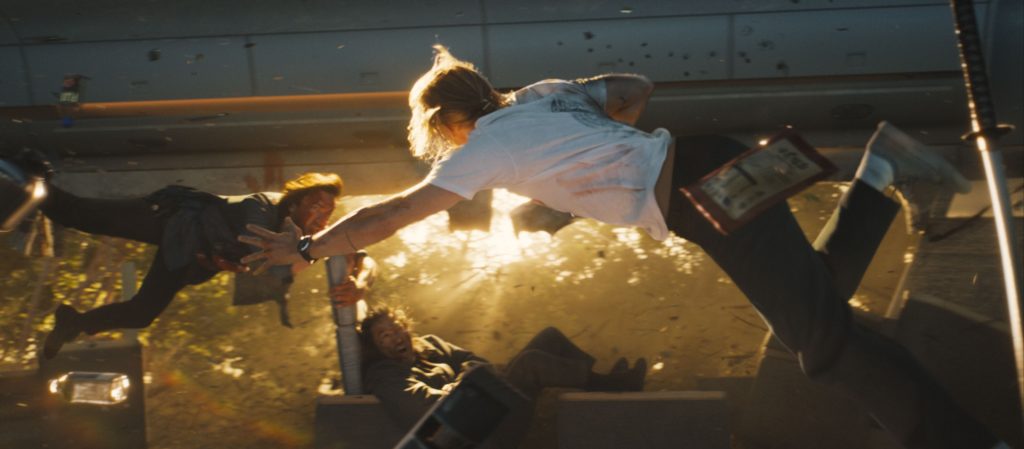
The VFX action sequences that define the film explode in the third act, as the train leaves Kyoto station. There are a few major crash moments – including James’ personal favourite, which he dubs the “can opener”.
“They crash into an oncoming train, and it flips up and over our hero train. It’s like a wave, where it crests over the top and shears the side of the train open. For the rest of the film, we have the entire half the train ripped open, which adds a sense of danger and chaos to the entire finale.”
For that section, James and his team had to build up the train with as much authentic detail as possible. A detailed interior and exterior framework was developed, along with custom interiors for the driver’s cab and the lounge, first-class and economy coaches.
“Each one needed to be filled with things that are relevant to each of those,” says James, “so the lounge car, for example, would be filled with Japanese snacks and utensils. With the effects work, which was led by our supervisor Nick Papworth, we wanted to make sure that all these different materials reacted and behaved really differently – the metal would crumple and shear apart, the wood seats would shatter – so quite a lot of complexity to be considered there. But it happens so fast, blink and you’ll miss it!”
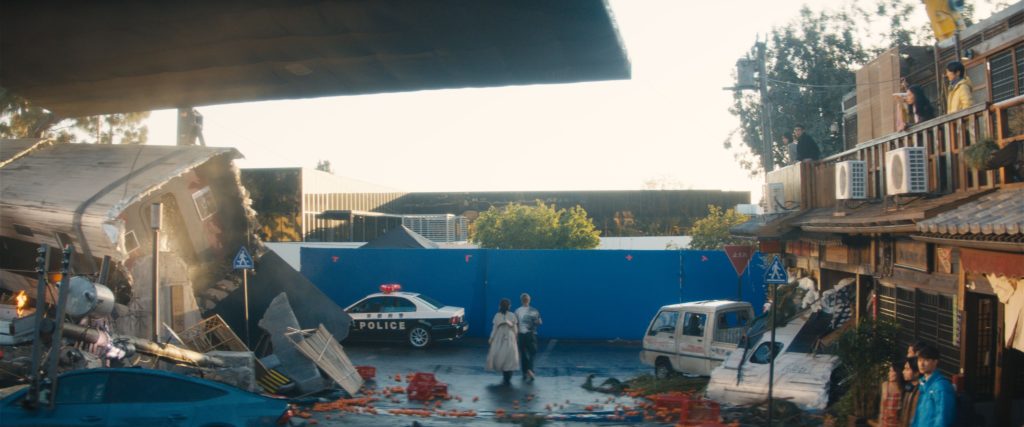
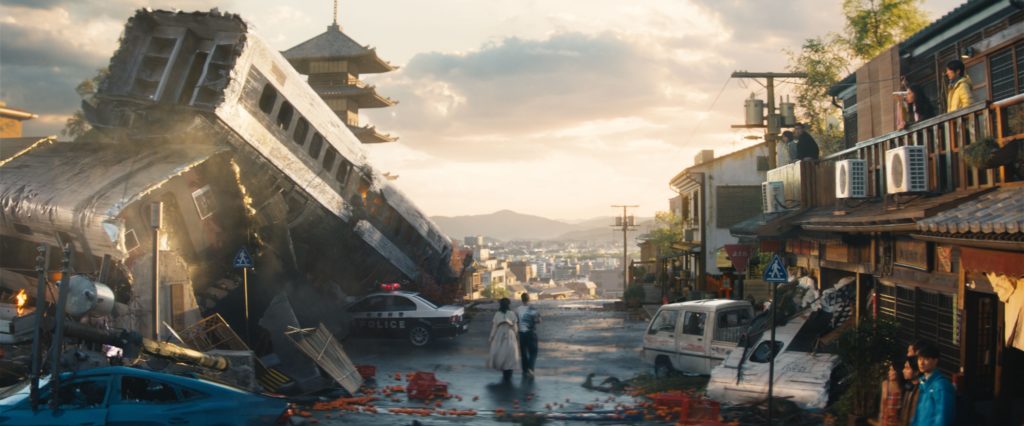
Another pivotal action sequence sees the train unable to stop and career into a traditional Japanese village (“No-one was hurt in the making of that!” jokes James). The challenge for DNEG was that the scene transitioned to full slow motion and there were several important choreography beats to land.
“For that moment the actors are on blue screen rigs with wire rigs so they could fly through the air, essentially. We had plates of Brad Pitt flying down the train in slow motion and then we added everything around him because we needed to have quite a lot of debris – pieces wobbling, tearing away, rocks flying, katanas flying, and so on. We really tried to make this final action moment have a lot of call-backs to elements of the film, so you’ll see lots of things flying through the air that you saw throughout the entire film.”
James is proud of how his team coped with the unexpected production challenges Covid threw at them. “We were kind of the first film out of the gates to start production during COVID, so it was a big challenge,” he admits. “I had finished doing Dune: Part One as COVID protocols came in, and we had the team communications built to try and transition to home okay. But starting a project fully remote, and to get it completed, was a big challenge for us and something we managed to do quite well.”

















